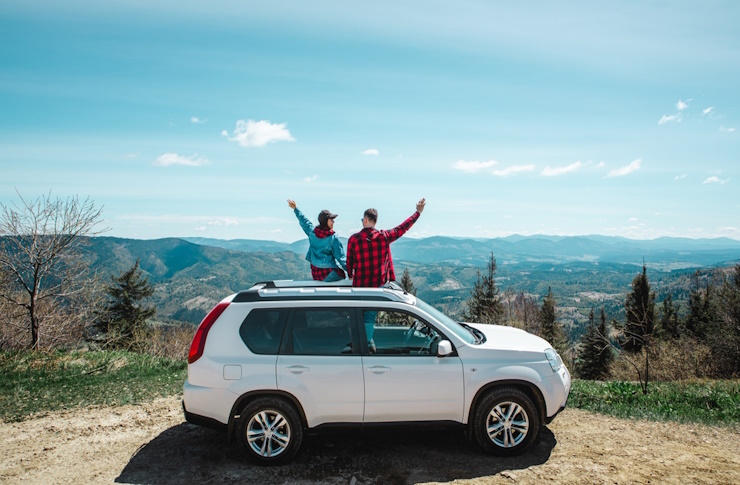Planning a Hot-Tub Cabin Stay
Hot-tub cabin stays combine comfort and scenic relaxation. Understanding cabin amenities, booking timelines, and ideal settings helps travelers plan restful retreats surrounded by nature and privacy for a rejuvenating getaway with lasting memories about the trip.

A hot-tub cabin stay blends outdoor scenery with the comfort of a private soak, making it a favorite for long weekends, anniversaries, and small group getaways. With a bit of planning, you can match your destination, amenities, and schedule to the kind of rest you want—quiet mountain mornings, forest trails by day, and stargazing from warm water at night. Use the guidance below to refine your plans, avoid common pitfalls, and make the most of your time off.
Hot-Tub Cabin Travel Ideas
Start by choosing a setting that supports the experience you want. For sweeping views and crisp air, the Smoky Mountains of Tennessee and North Carolina, Colorado’s Front Range, and the Adirondacks offer cabins with decks oriented toward sunrise or sunset. If misty forests and coastal rain are your style, the Pacific Northwest features woodsy cabins with sheltered tubs for year-round use. Closer to the Southeast, the Blue Ridge Mountains and the Ozarks provide lakes, waterfalls, and leafy vistas. If you prefer to stay closer to home, search for local services and scenic areas “in your area” that offer cabin-style rentals near state parks and reservoirs.
Time of year shifts the experience. Winter means quiet trails and the cozy novelty of a steaming soak as snow falls. Spring brings waterfalls and wildflowers; pack layers for variable temperatures. Fall foliage is a standout across much of the U.S., while summer suits lakefront cabins where you can alternate between a refreshing swim and the hot tub at night. Pair your stay with simple, low-effort outings—short hikes, scenic drives, farm stands, or stargazing when skies are clear.
Comfort and Relaxation Features
Not all hot tubs are the same. Scan listing details and photos for tub capacity (how many people it seats comfortably), cover quality, steps or handrails, and privacy screening. If hydrotherapy matters to you, look for multiple jet zones and adjustable flow. Well-managed rentals will note routine maintenance, water sanitization, and temperature controls. For safety and comfort, non-slip decking, well-lit walkways, and clearly posted guidance on temperature (often set between 100–104°F) are useful markers of a thoughtful setup.
Inside the cabin, small upgrades make a big difference. Seek a true lounging zone near the tub—towel hooks, robe pegs, and a bench or side table for water bottles. Indoors, features like a fireplace or efficient heating, blackout curtains, quality bedding, and sound insulation support deep rest. Good Wi‑Fi helps if you’re working remotely, while a quiet setting and minimal ambient light suit screen-free weekends. For added comfort, check for supplied extras such as spa towels, drink-safe glass alternatives, and rules allowing you to bring your own bath salts or aromatics (many places prohibit oils and additives to protect filtration systems).
Planning Nature-Inspired Escapes
A nature-focused itinerary doesn’t need to be packed to be satisfying. Choose one or two anchor activities—like a short loop trail, a wildlife viewing area, or a scenic overlook—and let the rest of the day center on unhurried meals and hot-tub time. If the cabin has a view, plan a sunrise soak with warm drinks or a post-hike evening session. Build in quiet hours for reading or journaling so your stay feels restorative rather than rushed.
Logistics matter. Confirm road conditions and vehicle access, especially in winter or mud season. Bring layers, quick-dry swimsuits, and dedicated spa towels or robes if not provided; water shoes help on damp decks. Pack headlamps or lanterns for night soaking, plus sealable containers for snacks to deter wildlife. If you’re cooking, prep a simple menu—pre-marinated proteins, one-pan dinners, and easy breakfasts. Check local firewood rules and burn bans, and use local services for groceries, guiding, or gear rental if you prefer to travel light.
Hot-Tub Care, Etiquette, and Safety
A clean, well-maintained tub is essential. Before your stay, review house rules on showering before use, maximum occupancy, and time limits. Avoid lotions, oils, and glassware in or near the tub. Limit soak duration and hydrate, especially at higher elevations where dehydration sets in faster. If you’re traveling with children, confirm age policies and always supervise. Sensitive skin or respiratory concerns may benefit from shorter sessions and cooler temperatures.
Respect the setting and neighbors. Keep voices low at night, close the cover after use to conserve heat and protect water quality, and follow any posted quiet hours. Outdoors, follow Leave No Trace principles: stay on trails, pack out trash, and never feed wildlife. These basics protect the landscape and keep cabin communities welcoming for future visitors.
Accessibility and Privacy Considerations
If mobility or sensory needs are part of your planning, look for practical details: sturdy handrails, step heights, door widths, and parking proximity. Ask hosts for recent photos of the tub area, including steps and lighting. For privacy, confirm whether the deck is screened from adjacent properties and whether outdoor lights are dimmable for stargazing. If you’re sensitive to noise, ask about nearby roads or ongoing construction and consider weekday stays for quieter surroundings.
Keeping Plans Flexible
Weather can change quickly in mountain and forest regions. Build flexibility into your schedule with light, indoor-friendly activities—board games, a movie queue, or a simple spa routine like stretching and breathwork before or after a soak. If conditions shift, swap a long hike for a scenic drive or a short interpretive trail, and reserve longer outdoor sessions for stable windows. A flexible mindset helps ensure the hot tub remains the highlight, not a backup plan.
In the end, a well-planned hot-tub cabin stay comes down to a few thoughtful choices: a setting that matches your pace, reliable amenities that support comfort and safety, and a loose itinerary that privileges rest over checklists. With the right preparation, you’ll return home feeling unrushed, warm, and ready for whatever comes next.




